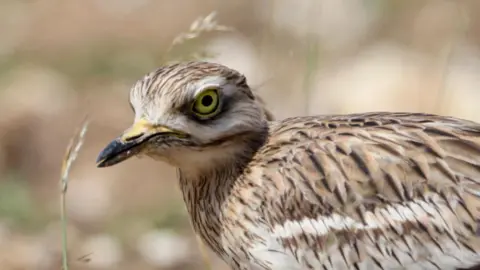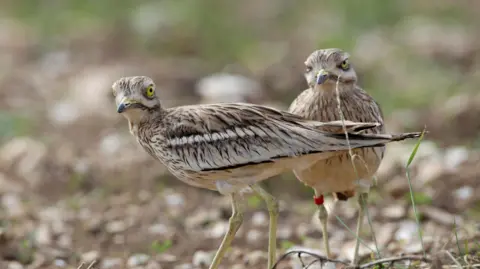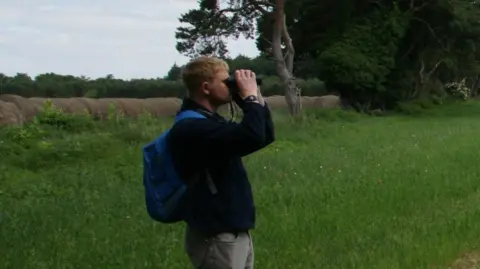Project to save endangered bird marks 40 years
 Andy Hay
Andy HayA conservation project in the East of England that has helped increase the population of one of the country's most threatened birds is marking its 40th anniversary.
In 1985 the number of breeding pairs of stone-curlews had reduced to fewer than 150 nationwide, with about a third based in eastern England.
The Royal Society for the Protection of Birds (RSPB) started attempts to increase their numbers that year by conserving, restoring and creating nesting habitats in Suffolk, Norfolk and Cambridgeshire.
Its conservation officer Tim Cowan said there were now 226 breeding pairs locally, which he described as "remarkable".
Stone-curlews were once widely found throughout England, but due to a gradual loss and deterioration of preferred nesting sites in the 19th and early 20th centuries their numbers dropped.
The birds are very specific about where they nest - they enjoy open, bare or sparsely vegetated ground with light, stone-based soils.
In the East of England their preferred nesting habitat is semi-natural grass heathland that is heavily grazed and they will also nest on spring sown arable fields.
 Andy Hay
Andy HayThe ultimate aim of the project has been to provide enough safe nesting places to support the species into the future.
The RSPB has worked with 57 farms and landowners in the region to protect what is now 226 breeding pairs.
With further efforts taking place elsewhere, there are now more than 365 breeding pairs in the UK.
 RSPB
RSPB"The willingness of farmers and landowners to work with the project and our dedicated volunteers by creating and protecting stone-curlew breeding sites over the past four decades, has been remarkable," Mr Cowan said.
"Simply put, this work couldn't have been done without them and our fellow partner organisations.
"The success of the stone-curlew project is proof that by working together we can make space for nature, if we really want to."
Follow Suffolk news on BBC Sounds, Facebook, Instagram and X.
